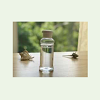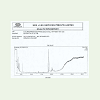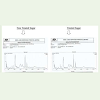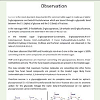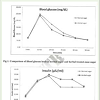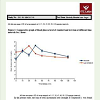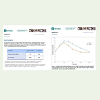Research Article
An Organic Engineering Breakthrough Technology to End Sugar the Global Challenge for the Benefit of Mankind
Nanda Gopalan CK*
Founder, Revolution, The research foundation & Director for common wealth science and technology academy for research, India
Corresponding author: Nanda Gopalan CK, Founder, Revolution, The research foundation & Director for common wealthscience and technology academy for research, India; Tel: 9382829551; E-mail: vu3cnn@gmail.com
Citation: Nanda Gopalan CK. An Organic Engineering Breakthrough Technology to End Sugar the Global Challenge for the Benefit of Mankind. Indian J Nutri. 2017; 4(4): 171.
Copyright © Nanda Gopalan CK. 2017 This is an open access article distributed under the Creative Commons Attribution License, which permits unrestricted use, distribution, and reproduction in any medium, provided the original work is properly cited.
Indian Journal of Nutrition | ISSN: 2395-2326 | Volume: 4, Issue: 4
Submission: 05/08/2017; Accepted: 19/09/2017; Published: 05/10/2017
Abstract
The world challenge facing humanity is connected to the fourth largest disaccharide carbohydrate sugar - cane and beet, which is the only preferred sweetener connected to our daily life. Fructose declared the white poison and responsible for human metabolic imbalance, which is the established fact through many hundreds of research from the year 1970. One more challenge connected to sugar being the high glycemic index food not suitable for the huge diabetic population around the world. The only choice to address “sugar the challenge” is to convert fructose molecule to aldehyde group make it digestive carbohydrate and convert glucose molecule to glucose pyranose enabling GI to less than 50. This breakthrough technology is the outcome of immense social responsibility to the field of life science.
Keywords:
Nanner; Toxic free sugar; Low GI sugar; Xon the organic solvent
Introduction
The author started the research foundation by the name Revolution in the year 1987. The aim of the research foundation is to study ancient Tamil life science in the field of physiology, pathology, medicine, food & nutrition, agriculture and water management. The author took personal interest in the study of molecular science with respect to ancient medicine preparation. The author was also too keen and interested in the study of food science. The fact understood behind the art of cooking that it is directly related to the subject of toxicology.
Revolution the research foundation undertook the world challenge with respect to sugar which was called the white poison. “Glucose + Fructose = Sucrose” is the most preferred natural sweetener by the human population for many many years. This is due to the fact that adding sugar does not interfere with the flavor of any food. Refined cane sugar is declared as white poison because of fructose molecule.
The French scientist Augustin Pierre first identified the molecule in the year 1849. Ten years later in the year 1857 William Miller the British chemist coined the word fructose. Understanding of biochemistry started its journey only from 1930 onwards. Studies related to toxicity of fructose began by British scientist community only from the year 1970. Finally the world scientific community understood sugar, cane or beat is the white poison and cause for many human health hazards under the banner of fructolysis.
The real world challenge facing the mankind is to address sugar the white poison which cannot be avoided under any cost from our daily life. Even though many studies were undertaken with respect to fructose the scientific community is yet to find a path to make fructose a digestive carbohydrate. Answer to the fructose molecule will give birth to toxic free sugar. Another task with respect to sugar is the factor of glycemic index and glycemic load. Cane or beat sugar are having GI of 68 which is very high GI food. Sugar - Disaccharide carbohydrate integral and inevitable part of every human life is the real health destroyer, the fact very clearly proven time and again by the hard work of many scientific schools.
The author - Founder (Revolution, the research foundation) received a specific request in the year 2003 by the community around him. The diabetic world especially the parents of Juvenile diabetics requested the author, “Can you make our children eat sugar”. The author undertook the real task to answer the world challenge to make toxic free sugar and reduce the GI of sugar less than 55. The author with all his traditional knowledge and experience with the great degree of social responsibility was confident enough to undertake a journey to achieve the task. It took six long years to develop a technology without any chemical or solvent only with the power of organic engineering to address the real issue with respect to sugar. The author took six long years to achieve an answer to a task is due to financial constrained. In Asian countries it is impossible to find financial agencies which can fund research. The author helped himself with his own earning and family members help to generate funds for the wonderful achievement to reach toxic free and low GI sugar.
The modern science instrumentation testing, animal model testing, human model testing was carried out by reputed labs in India and abroad to prove the answer to the world challenge. The greatest handicapped situation the author faced that there was no solvent available to test sucrose in Gas Chromatography & Mass Spectrometry (GCMS). The author undertook this challenge and invented a universal solvent to test sucrose in GCMS and given a name to the solvent “XON”. Innovating XON enabled GCMS study to prove conversion of fructose and conversion of glucose molecules with respect to the post harvest technology fully developed to treat the sugar. The post harvest technology is the herbal water called “Nanner” when mixed in appropriate proportion renders cane sugar toxic free and a low GI food. The real achievement is to address “Sugar the World Challenge”. The author very carefully designed this technology for the scalability to meet the global demand which will provide tremendous hope to a global product as a business model.
Research design
The world scientific community studied biochemistry only in the last nine decades and has established facts beyond doubts with respect to glucose metabolism. “Sugar the challenge” always due to the threatening effects of fructose the white poison and the high GI factor. The alarming growth of diabetes mellitus deprived large section of people away from sugar and sugar related products.
The chemical world does not have any opening to address themolecular issue of sugar. Mixing molasses to achieve lowering the GI of sugar is not the answer due to the heavy load of pathogens and higher molar mass components. High fructose syrup, Oligo-fructose and mixing apple vinegar with sugar are practiced to reach low GI sugar. All the above mentioned techniques are exactly against the basic principles of biochemistry established. Rice, Wheat, Milk and Sugar are the food produced by the humanity, almost taking care of 80% of our food need. Sugar and milk represent disaccharide carbohydrate; rice and wheat represent poly saccharide carbohydrate. Increasing the amylase pectin percentage is not the answer to reduce the GI of rice. By doing this resistance starch will increase were in glucose with respect to the quantity of food eaten is very less to the human cells. To answer the world challenge the author decided to use the power of organic engineering from the traditional knowledge [1-5].
The author made extensive study on ancient Tamil science contributed by many scholars provided or gifted many facts of nature to the future humanity with all their findings relevant to various branch of science. Innumerable number of plant kingdom components is used in our traditional system of daily cooking. The ancient science believes in fresh cooked food twice a day which will result in healthy life not allowing metabolic syndrome to set in.
There are procedures to prepare drinking water which will provide us non contaminated bacterial free water for our daily consumption. Specific works are made to procure food ingredients time to time during seasons and scientific storage specification is followed to protect the molecular value of every food component (Figure 1).
With an experience of studying the food and nutrition part of ancient science, the author carefully chosen seven plant kingdom ingredients which are used in our system of daily cooking in South India. The medicinal property of these seven major ingredients is highly valuable to maintain our human metabolism intact at all times.
These seven ingredients are
1. Black Pepper
2. Dried Ginger
3. Cinnamon
4. Fenugreek
5. Gooseberry
6. Pomegranate
7. Turmeric
Using the seven ingredients colorless, odourless and tasteless herbal water is produced with the help of simple traditional method (Figure 2). 40 ml of this herbal water is used to blend one kilogram of sugar. The wet sugar is kept overnight and taken up for drying the next day. After drying no color change or physical change in observed. This endothermic process is effective in resulting total conversion of Fructose and conversion of Glucose molecules in the treated sugar. After the treatment sucrose will become toxic free sugar and at the same time low GI sugar.
Results and Discussions
The unique power of organic engineering is carefully chosen to address the world challenge making sucrose toxic free and low GI food. The only way to achieve the tough task is to make conversion of fructose and conversion of Glucose. Efforts are well made to achieve the target.
The essence of organic engineering is to device the technology support without any artificial chemicals or solvents. The herbal water was produced to achieve the goal and was tested with SGS lab, C-Tech Lab and SMS Lab and found the water base tool is completely heavy metal toxic free and chemical residue toxic free and pesticide residue toxic free. Using the raw material from the Nature, the primary goal is to make sure no toxicity of various levels should be found in the tool - The herbal Water.
Molecular analyses were tried with HPLC RID, LCMS/MS, FRIT, NMR and Mass spectrometry could not determine required results to prove the targeted results. Absence of solvent to test sucrose in GCMS was the issue to prove the conversion of fructose and conversion of glucose molecules in sucrose. The tremendous effort was put in to innovate an organic solvent the XON was achieved and the comparative study of treated and non treated sucrose from the same batch was tested using XON, the organic solvent in GCMS number of times (Figures 3-5).
Organic solvent
WHO affiliated high end lab, the micro therapeutic research centre was chosen to carry out an animal model study to support the GCMS results. Observation was found, the group of mice consumed normal sugar and blood glucose levels were on the higher side and insulin secretion during the period were found in low levels compare to the group of mice consumed treated sugar were having blood glucose level disappearing fast and insulin level in the same period of time was on the higher side (Figure 6).
An animal model for glycemic index test was carried out at ITC Lab in India and the herbal blended cane sugar GI was found 45.6 (Figure 7).
GI Labs, Inc, (Toronto, Canada) was chosen to carry out the GI of treated sucrose using an in vivo method. The testing protocol used to determine the glycemic index of the treated sugar complied with the International Organization for Standardization: ISO 26642:2010 “Food products - Determination of the Glycemic Index (GI) and recommendation for food classification guidelines for GI determination. The results of the study demonstrated that the treated sugar has a GI of 50 + or - 3 which falls in the low GI category (Figure 8).
The human body approximately built with 100 trillion cells. Monosaccharide carbohydrate glucose is the only energy source for every individual cell. Cellular respiration studied under the banner of oxidative phosphorylation with an anabolic action glucose molecule is converted to ATP molecule which is a high energy source. Adenosine triphosphate is a high energy molecule produced by the electron transport chain by mitochondrial is the only energy source to drive the DNA and RNA for cellular function. The quantum of glucose observed by the human body should be adequate enough for our physiological function in total. 75% of the glucose consumed is used by the human brain which weights less than 2 kilos due to high metabolic rate [6-10].
Inadequate carb loading through our diet will deprive the human cells and lead to low glycemic part of the brain which will result in depression (Dr. Russell Blaylock research paper food and nutrition of the human brain). One gram of sugar is calculated as 4 calorie. 0 calorie food is only a myth reducing carbohydrate and using more of artificial sweeteners will lead to low glycemic part of the human brain and makes a person tired during the day, if the person is normal or diabetic. All artificial sweeteners are completely lacking 1:2:1 ratio of carbon hydrogen and oxygen and also having higher molar mass. Any molar mass monomer beyond 200 cannot be broken down by catabolism resulting in no production of ATP. Hence refined sugar as a disaccharide carbohydrate is an inevitable source to energy furl to human cells. The author is successful to the answer the challenge making toxic free sugar and also reduces the glycemic part of the sugar with an innovative post harvest technology using the principles of endothermic process.
The above mentioned vital testing exploration are showing evident observation with respect to conversion of fructose and conversion of glucose molecules present in treated sucrose compared to normal sucrose. The conversation of fructose and glucose molecules is clearly leading to digestive monosaccharide carbohydrates up to cellular respiration. Hence, the technology achieved toxic free sugar and sugars a low GI food. The entire scientific validations data are available in the given link.
Conclusion
“Sugar the World Challenge” is finally answered. The sugar producing industries around the world has reached close to 200 million metric tonne output per annum. 80% output is from cane and 20% output is from beat. 65% of the total sugar output consumed by the food processing industries. Balance 35% sugar output is consumed by the households. The study shows sugar consumption by mankind is increased three times in the last 100 years. The hidden sugar in processed food available to us in the huge numbers is the real concern by the scientific community. Many documentaries were produced from the year 2014 to 2017 available to us in the YouTube showing the real danger facing humanity with respect to sugar and sugar related products. WHO came out with the recommendation recently, six spoons of sugar (24 grams) is the safe gramage an individual can consume per day which is highly impossible with the present day food habits.
Answer to the world challenge with respect to sugar is to develop technology with the power of organic engineering achieved by the author with the hard work of 14 long years. The post harvest technology developed called Nanner is a proven technology to convert fructose and glucose molecule resulting in toxic free sugar and low GI sugar. The achievement will lead to save our humanity protecting our children who land up with dental problems. Humanity fear sugar that the modern day children are very highly affected, this is due to the agriculture of cane using Hazardous chemical fertilizers and fructose toxicity The Nanner also answers the fertilizer toxicity in sugar and provide more than 40 months shelf life to the treated sugar.
Diabetes Mellitus grown very huge in percentage with respect to world population is due to chemical based agriculture. Toxic pesticides and chemical fertilizer provided sub standard food material from the agricultural output to the humanity in the last five decades and completely ruined the germy index of the soil. Only post harvest technology can help to turn the food into human friendly. Once such achievement is Nanner to address the world challenge with respect to sugar.
The author is extremely proud to invent a universal solvent XON to test sucrose is GCMS. Many scientific communities do not involve in sugar research due to one major reason, absence of solvent to test sucrose in GCMS, the only way to ascertain research study on sugar. Nanner the post harvest technology developed to answer the sugar challenge was award by Limca book of records in 2015, Indian book of Records, World record India, Asian book of Record and Golden book of World Record in the year 2016. The author was also given an honorary doctorate for the above achievement by the World Record University.
The author carefully designed the industrial model and successfully made the product available to the human population in India from the year 2012. In the last four years thousands of normal individual and thousands of diabetic individuals of all age group and all types of diabetics enjoyed sugar freely in their daily life and benefited with respect to their health wellness.
Acknowledgment
I sincerely thank Mr. Suresh Kumar S, Vice president, SMS Labs, Chennai and I also sincerely thank Dr. Alexandra L Jenkins, Director Research, GI Labs (FDA Approved), Toronto, Canada and I sincerely thank Dr. Selvaraj V & Dr. Lakshmananpathy (Retired HOD Cardiology Madras Medical College) and consultant of Micro Therapeutic Research centre, Chennai. Dr. Gayatri Hela P PhD, Managing Director Nature B Lab LLP, Sigma Tech Park, Bangalore, India. For their full hearted support which has made the achievement possible. The funding for the entire research project was contributed by Dr. Nanda gopalan CK and his family members. A small funding contribution was made by Mr. Ajay George, Mr. Anil Batra and Mr. Malik Mulla, Board of Directors Natural life specialty private Ltd. Pune, India.
References
- Bohar (7000) Ancient Tamil text: Literature 1522 & 1570.
- Gunavelakam P. Ancient Tamil text. pp. 56-112.
- Thirumandiram T. Ancient Tamil text: Literature 2122 & 2924.
- Gunavagadam A. Ancient Tamil text. pp. 26-32.
- Pross A (2012) What is life? How chemistry becomes biology. Oxford university press, Great Clarendon street, Oxford, UK, pp. 1-199.
- Lane N (2002) Oxygen: The molecule that made the world. Oxford university press, Great Clarendon street, Oxford, New York, pp. 1-366.
- Pert CB (1984) Molecules of emotion: Why you feel the way you feel. New York.
- Lipton BH (2005) The biology of belief: Unleashing the power of consciousness, matter & miracles. Hay house edition, USA. Pp. 1-303.
- Dwyer DS (2002) Glucose metabolism in the brain. Academic Press, New York. 51: 1-547.
- Clark M (2004) Understanding diabetes. John Wiley & Sons, Southern gate, England. pp. 1-117.

